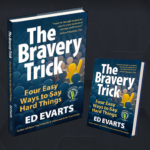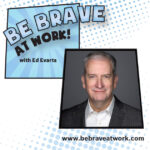
by Ed Evarts | May 31, 2017 | Interacting, Relationships, Reputation, Visibility and Value
Your professional success rests with the degree to which you raise your visibility in your organization and industry. You could spend all of your time being visible within your organization at the expense of industry visibility. However, when you are only visible in...

by Ed Evarts | May 24, 2017 | Relationships, Reputation, Visibility and Value
Raising your visibility and value is about being bold and taking steps that you may not normally take within your organization and industry. To that end, I recently signed up to have myself video-taped during a presentation in Concord, New Hampshire, where I chatted...

by Ed Evarts | May 17, 2017 | Relationships, Visibility and Value
During my tenure as an author, speaker, and leadership coach, many of my colleagues are curious how I got my practice started. Many of you may not realize that I started my business from “square one.” I did not know I was going to be laid-off from Iron Mountain and I...

by Ed Evarts | May 10, 2017 | Interacting, Relationships, Reputation, Visibility and Value
In addition to raising your visibility within your organization, it is more important than ever to raise your visibility outside of your organization as well. Your desire to attend an industry association meeting probably feels like a dream. Your ability to attend...

by Ed Evarts | May 3, 2017 | Interacting, Relationships, Visibility and Value
I would estimate that 90% of my clients are avoiding a conflict-based conversation. Who can blame them? Not only are conflict-based conversations uncomfortable, these individuals have experienced ZERO training in how to effectively manage conflict in the workplace....










